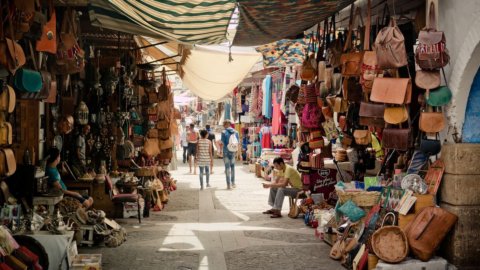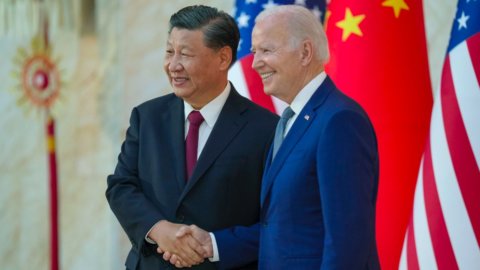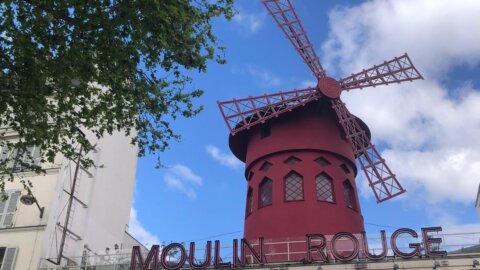According to the latest forecasts of the World Economic Outlook, published by the International Monetary Fund, the economies of sub-Saharan Africa are continuing the recovery started last year, after the slowdown of the two-year period 2015-2016. The ISPI analysis reports that the current year will close with a growth of 3,1%, to then rise to 3,8% in 2019. However, a less open international context could have an impact on next year's growth prospects: the momentum of trade and industry has stalled at the moment and the prices of various raw materials have decreased due to the US-China escalation which has weakened the global demand. Without forgetting the intensification of financial market pressures on the debt of some countries in the face of the strengthening of the dollar.
Africa extends for more than 30 million km2, it represents an immense territory rich in natural resources which is estimated to contain not only 65% of the planet's natural resources (gold, oil, copper, iron, bauxite, rare earths, etc.), but also enormous expanses of arable land. Furthermore, if compared with the other continents, the population is very young and growing rapidly: 70% of Africans are under 30 years old, and from the current 1,2 billion it will pass by the end of the century to over 4 billion inhabitants, increasingly urbanised. From an economic point of view, a greater diversification of productive activities and a better fiscal policy have made their way over the last 15 years: moreover, many African economies have begun to implement anti-cyclical policies, mitigating the economic impact deriving from the volatility of commodity prices . At the same time, infrastructure is improving rapidly: new airports, roads, ports and power plants are being built across the continent. In a context where, over the last twenty years, we have been witnessing a significant reduction in armed conflicts and an improvement in political conditions and the main social indicators.
In this scenario, the real engine of the continent's growth has been investment. Favored by low interest rates, public and private FDI have given a strong boost to domestic demand and the rapid development of the tertiary sector, especially with regard to commerce, transport and telecommunications. According to UNDESA data, in 1980 only 22% of Africans lived in urban centres: today the figure has risen to 40% and by 2030 it is expected to reach 47%, with the 18 largest cities having a combined spending power equal to 1,3 trillion dollars. In many markets, urbanization is stimulating the growth of infrastructure resulting in productivity gains, economies of scale and the exploitation of external economies. Analysts estimate that the African continent will overtake India in terms of labor force by 2040, when the population will include as many as 1,1 billion people of working age.
Household consumption is expected to grow by an average of 3,8% per year to reach $2,1 trillion in 2025, while total business spending will be even higher, rising from $2,6 trillion to $3,5 trillion by 2025. Finally, local businesses are growing at a rapid pace. According to McKinsey, there are at least 400 companies with a turnover exceeding one billion dollars, for a total turnover of 1,2 billion in 2015. Contrary to what one might expect, only 30% of revenues are made by companies operating in the natural resources sector, while only two-fifths are listed on the stock exchange and just under 30% of them are multinationals.
However, there are more cautious positions with respect to the growth prospects of sub-Saharan Africa. According to some scholars, the current development model is very different from the one that has favored growth in Europe and Asia: the local workforce is moving away from agriculture and towards urban areas, but the pace of industrialization underway is too slow for the dynamics of convergence predicted by classical economic theory to actually take place. The difficulties on the part of African economies in absorbing the large mass of internal migrants from the countryside means that these find employment above all in the low-productivity service sector and in activities connected to the informal economy.
According to the IMF, the GDP dynamics over the three-year period 2018-20 should remain robust, supported by infrastructure investments, in the western part of the continent led by the Ivory Coast and Senegal which will grow at a rate of 6,8% per year. At the same time, the prospects have also improved in most of East Africa: the growth of Kenya estimated at +6,3% between the years 2019-23, driven by investments and domestic consumption, and above all of Ethiopia, should be underlined. The latter represents the most dynamic economy in the region, with an estimated growth of 8% supported by public investments in infrastructure and reforms in favor of FDI originating in particular from China, but also, as demonstrated by the case of the Calzedonia group, by SMEs with forward-looking development plans that aim at the opportunities offered by the African continent.
Here then is that, like every year, the research company Quantum Global Research Lab has published the Africa Investment Index (AII) in order to provide investors with a guide to the best markets on the continent to invest or start a business. The criteria considered include, among others, import payment hedging, current account balance, local firm stability, ease of doing business, geographic location, FDI flow, presence or absence of an conducive to innovation and economic development, urbanization and GDP growth rate. From the ranking it emerges how the most attractive country to invest in Africa is Morocco, followed by Egypt, Algeria and Botswana. The top five countries in the ranking overall managed to attract FDI of $13,6 billion. And, according to data from the latest Ernst&Young (EY) Report, Italy is the first European country by value of foreign direct investments made in Africa in 2016, with a total of 20 projects for a total of 4 billion dollars: 4,3, XNUMX% of total FDI on the continent, behind China, the United Arab Emirates and Morocco.





